The door of the Pantheon is one of the oldest preserved in the world
The door of the Pantheon is among the oldest bronze doors in the world, existing today. This gigantic door survived the medieval looting because over the centuries the temple was transformed into a church.
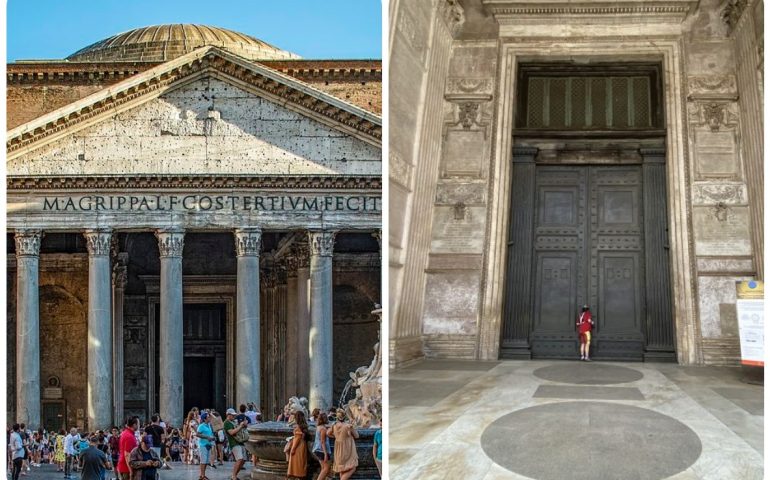
This is the oldest gate still in use in Rome. The doors are so well balanced, yet very heavy, that they can be easily pushed or opened by one person. It is one of only two doors in the world with a 2000-year-old lock still in operation.
The door is original Roman and is one of the very few bronze doors that survived the robberies of the barbarians and Barberini. Near the hinges the marks left by the irons used to unhinge them are still visible. In vain of course.
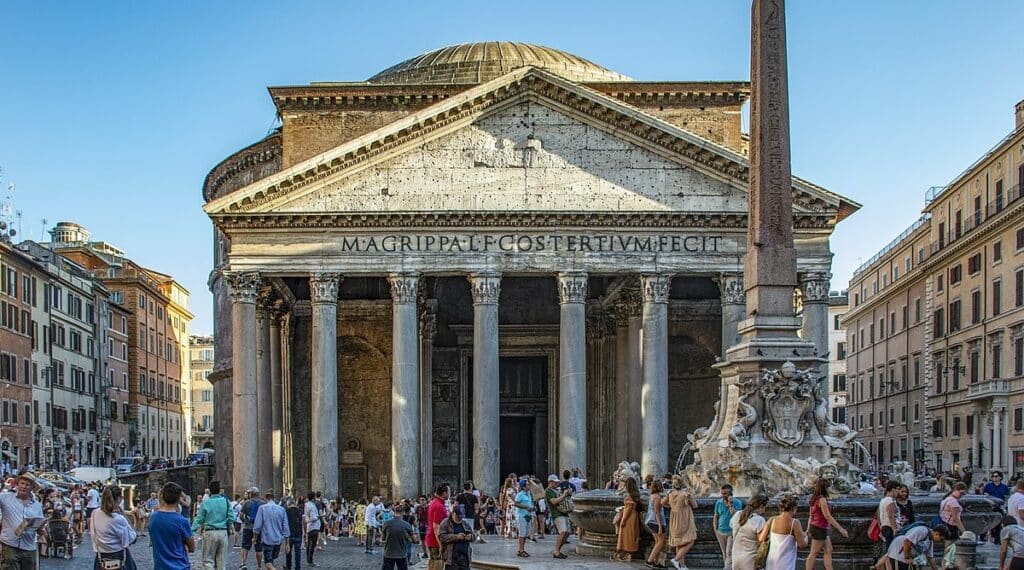
As reported by the Roman Empire, the Greek doors and, especially the Roman ones, could be single, double-leaf, triple, sliding or folding. The first hinges appeared in Rome, while the first locks already existed in Egypt, but it was the Romans who improved them by introducing the use of metal.
Furthermore, with the invention of iron locks, the Romans were finally able to have effective protection against burglary.
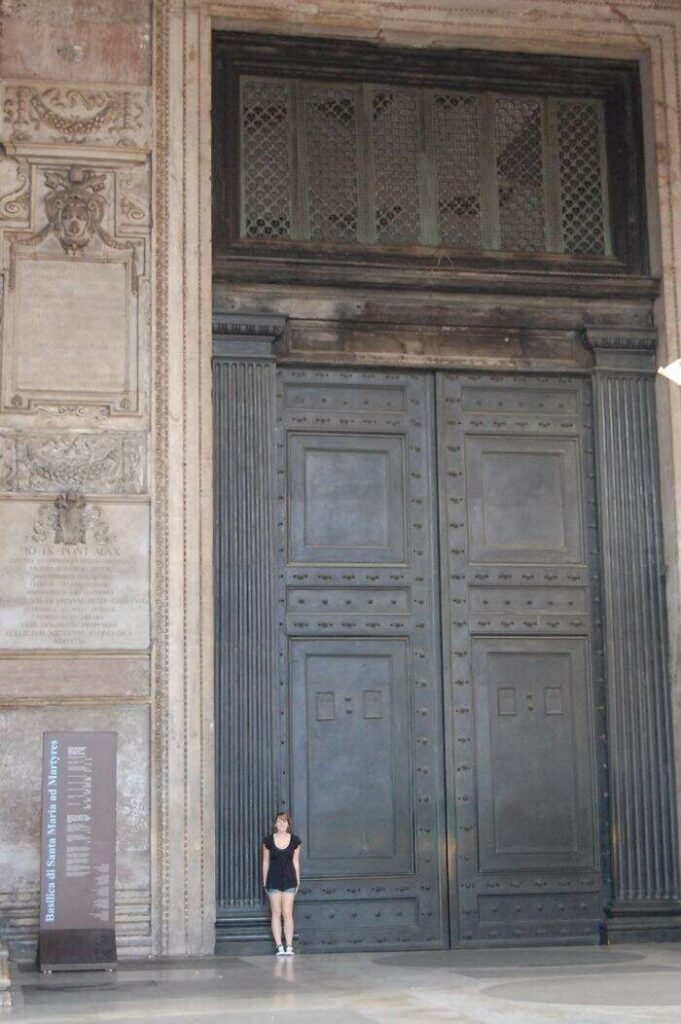
The Romans had become the masters of bronze doors, a very popular material because it was relatively cheap and easy to blend into desired shapes or motifs. Mostly double doors in solid bronze were made, usually supported by pins inserted into sockets in the threshold and in the lintel.
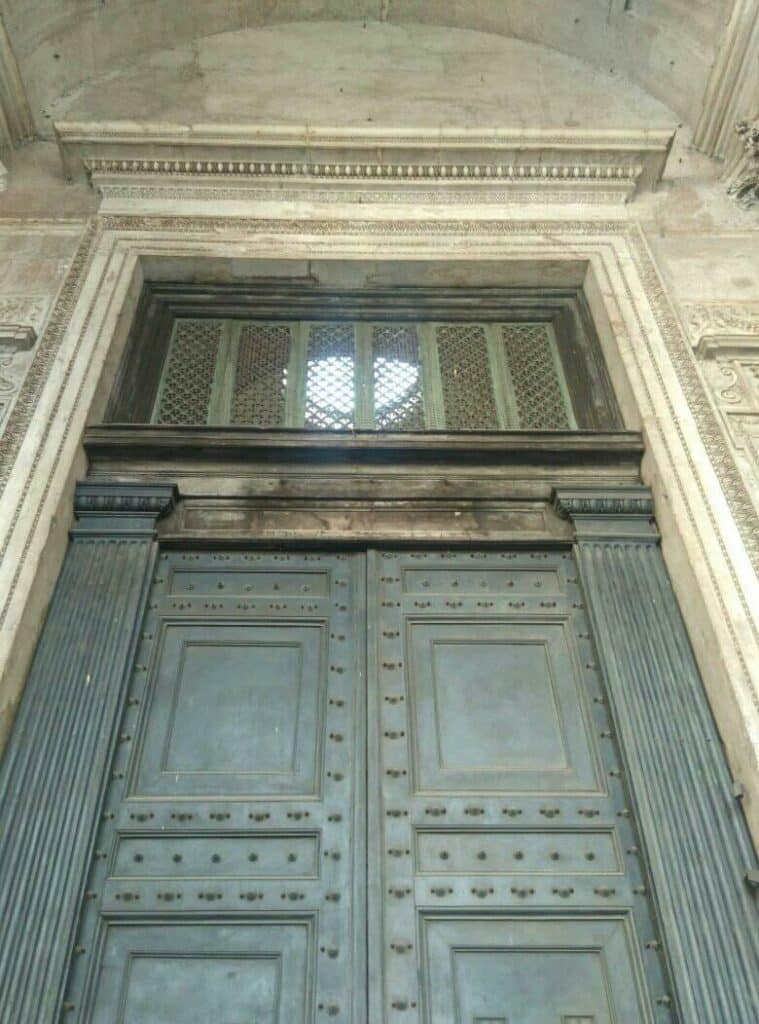
Among the examples that can still be admired, the bronze doors in the church of Santi Cosma e Damiano in Rome, with two doors, each with two framed panels. Very beautiful and very old, since they were stolen from the Temple of Romulus, the mausoleum built by Maxentius for his son Romulus who died prematurely.
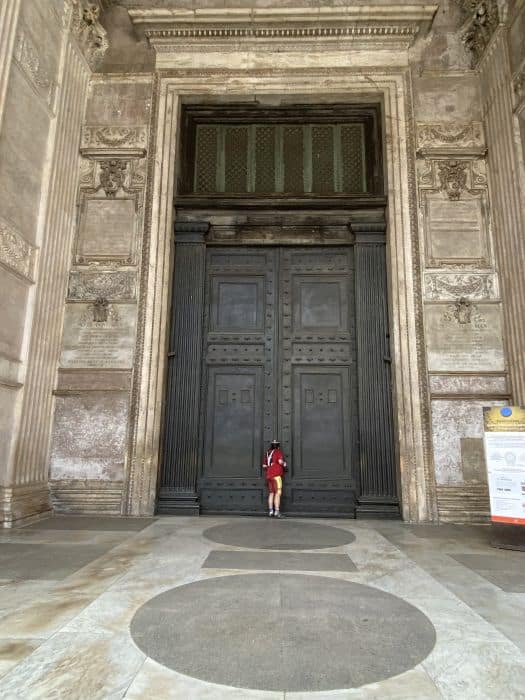
The door of the Pantheon is magnificent, with two doors, 7.53 meters high and 4.45 meters wide. The door is still that of Marco Agrippa, or at least as many suppose, the one wanted by Emperor Hadrian, and in any case it still works very well today.
Two other bronze doors from the Roman era are located in the Lateran Basilica, and belong to the Baths of Caracalla. They are also bronze and beautiful.
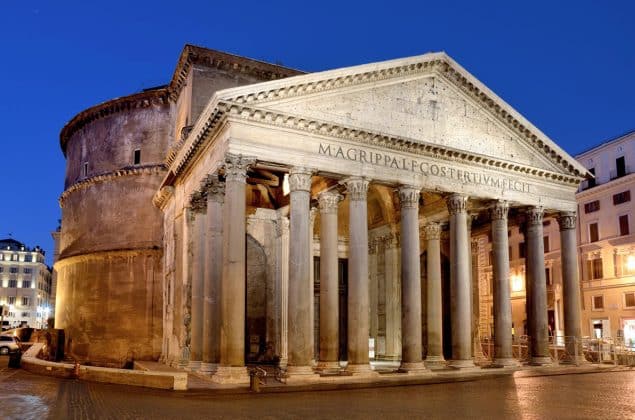
The Pantheon, located in the Pigna district, in the historic center, is a building of ancient Rome built as a temple dedicated to all past, present and future divinities. It was founded in 27 BC. by Marco Vipsanio Agrippa, son-in-law of Augustus. It was rebuilt by the emperor Hadrian between 120 and 124 AD, after the fires of 80 and 110 AD. they had damaged the previous construction of the Augustan age.
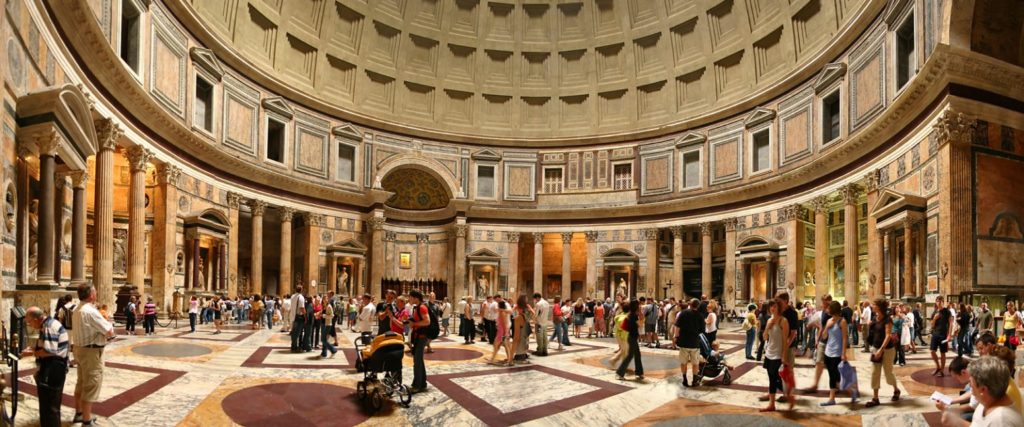
It is composed of a circular structure joined to a portico in Corinthian columns (eight at the front and two groups of four in the second and third row) that support a pediment. The large circular cell, called rotunda, is surrounded by thick masonry walls and eight large pylons on which the weight of the characteristic hemispherical concrete dome is distributed, which houses at its apex a circular opening called oculus, which allows the illumination of the internal environment.
The height of the building calculated at the oculus is equal to the diameter of the rotunda, a feature that reflects the classic criteria of balanced and harmonious architecture. Almost two millennia after its construction, the intrados dome of the Pantheon is still today one of the largest domes in the world, and specifically the largest built in Roman concrete.
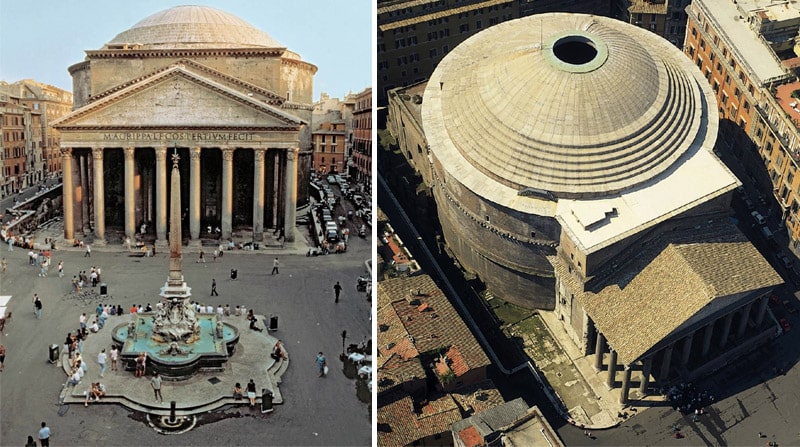
At the beginning of the seventh century, the Pantheon was converted into a Christian basilica called Santa Maria della Rotonda or Santa Maria ad Martyres, which allowed it to survive almost intact the looting inflicted by the popes on the buildings of classical Rome. It enjoys the rank of minor basilica and is the only basilica in Rome other than the patriarchal ones to still have a chapter. The inhabitants of Rome popularly called it la Rotonna (“la Rotonda”), from which the name of the square and the street in front of it also derive.
READO MORE STORIES ABOUT THE PANTHEON IN ROME
State property of the Italian State, since December 2014 the Ministry for Cultural Heritage and Activities has managed it through the Lazio Museum Complex, and since December 2019 through the State Museums Direction of Rome. In 2019 it registered 8,955,569 visitors, making it the most visited Italian state museum site.
